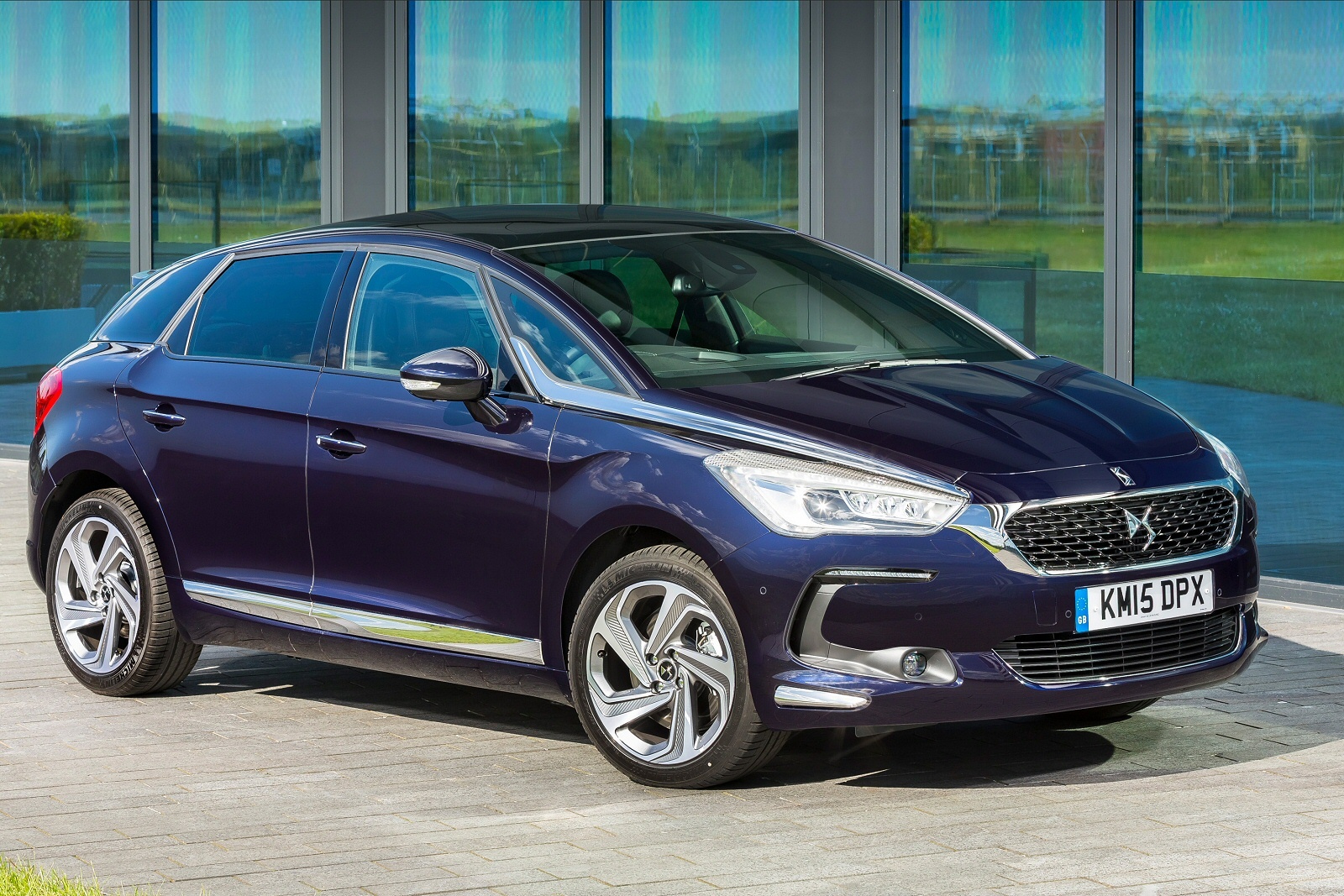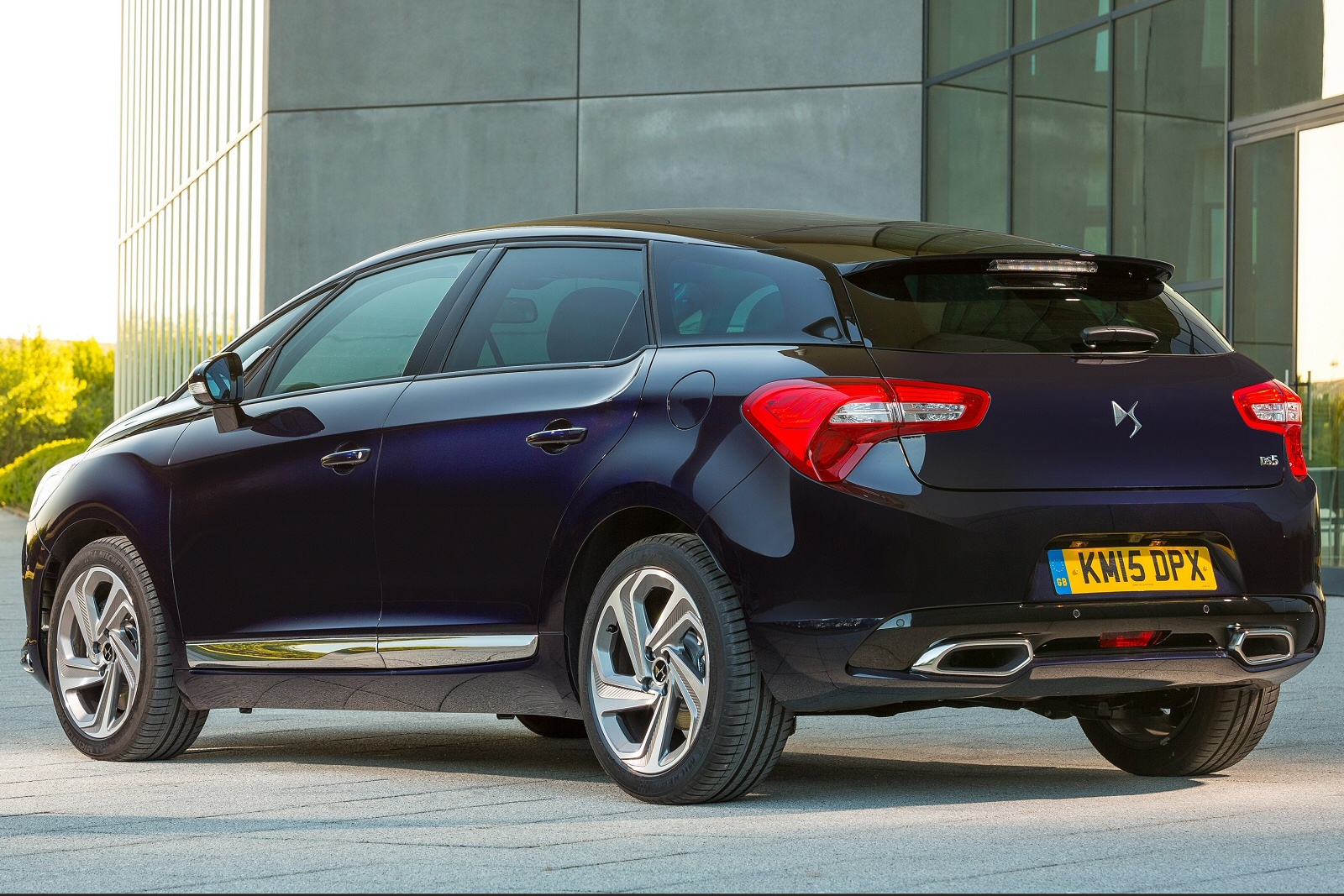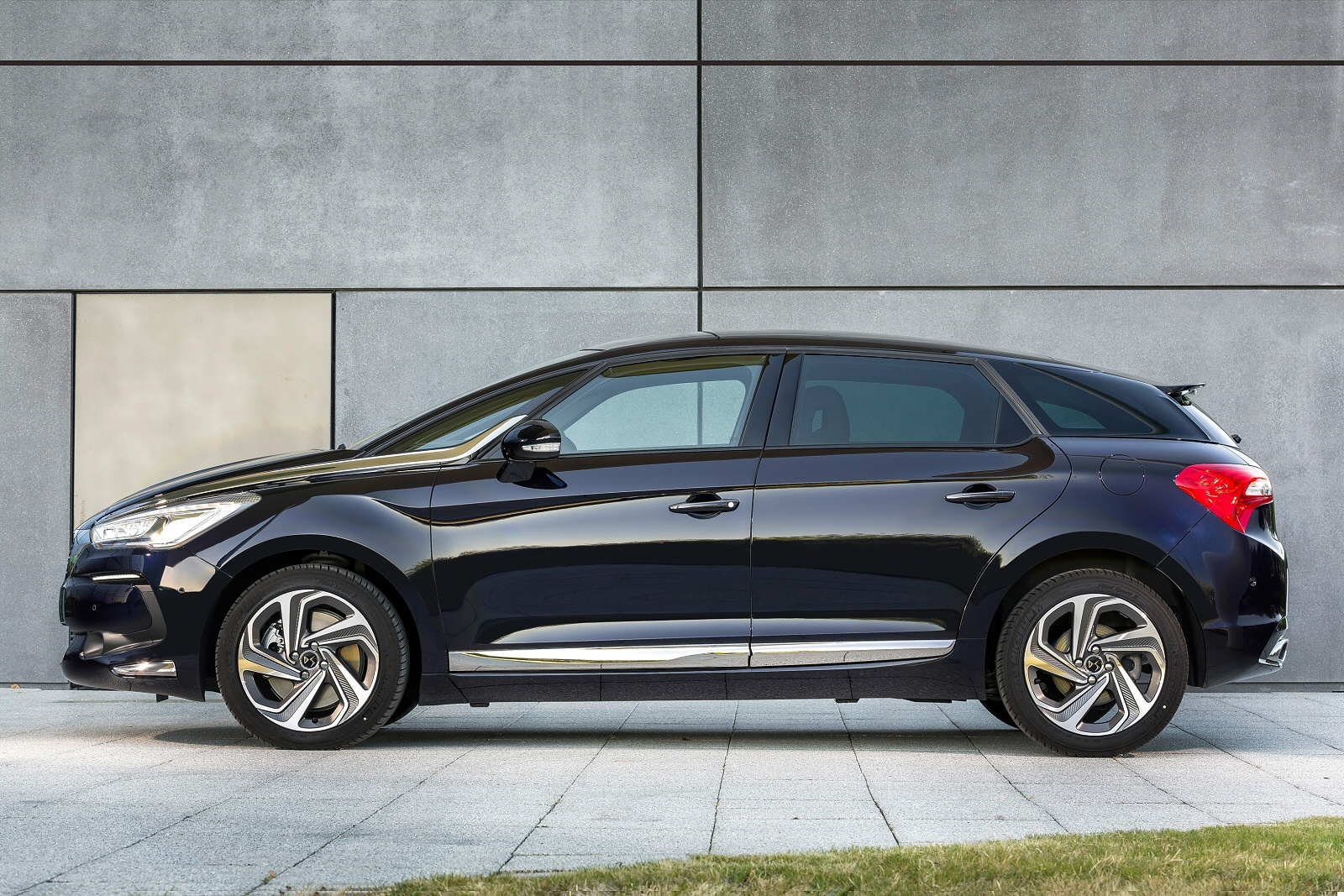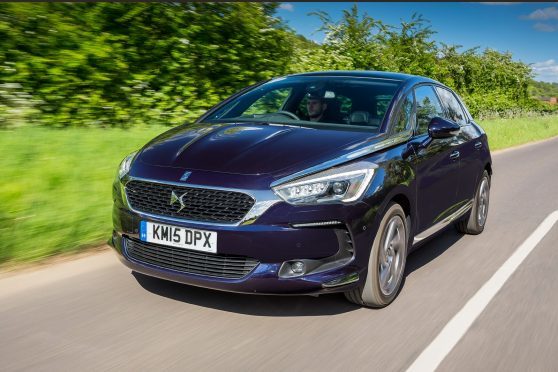Citroen is looking to do something a bit different with the DS brand. It’s trying to spin it off as a standalone entity, separating it from the Citroen badge entirely in the minds of customers. This is easier said than done.
Lexus and Infiniti are usually thought of as the luxury arms of Toyota and Nissan respectively and they never had to overcome years of being sold as Toyota Lexuses or Nissan Infinitis first.
The DS5 is the flagship model in this brave new DS world and it’s been facelifted and updated to help it branch out anew.
The DS5 is offered with a choice of no fewer than five powerplants. The most exotic is the Hybrid 4×4, which ditches the old Hybrid4 tag but retains the 197bhp diesel hybrid tech.

Petrol options include the THP 165, which comes with start-stop technology and is mated to a six-speed automatic transmission.
As the name suggests, it develops 165PS (162bhp) at 6,000rpm and 177lb/ft of torque. Go diesel and the BlueHDi 120, 150 and 180 engines are sure to offer something to tempt.
The BlueHDi 120 develops 118bhp and 221lb/ft and is offered with a six-speed manual transmission, with a six-speed auto having also been developed for the car.
The mid-range BlueHDi 150 diesel variant develops 147bhp and 272lb/ft from just 2,000rpm, but the gem is the top BlueHDi 180 unit. This auto-only model is able to polish off the sprint to 62mph in 9.2 seconds and keep going to 137mph.
The styling updates aren’t too dramatic, but serve to remind us what a striking-looking car the DS5 really is.

The front end introduces some of the styling themes of the DS3 model and the revised grille features a DS logo in place of the traditional Citroen chevron.
The headlights are different too, with xenon and LED options, while the light pods incorporate scrolling indicators. The bonnet panel has also been re-profiled, flowing into a set of chrome ‘sabres’ that run from the tips of the headlights to the front windows.
At the back, there are tail pipes incorporated into a revised rear bumper assembly and shaper-looking tail lamp clusters.
We were big fans of the original DS5 interior, but this one moves the game forward with fewer buttons on the fascia thanks to a touchscreen media system.
As before, there are some beautifully ornate seats on the options list, plus the latest ‘watch strap’ upholstery is available in two-tone black and deep blue, along with new ‘DS monogramme’ trim on the doors and central console.
The most symbolic interior feature is the roof. With its three light wells, the ceiling of this car creates a unique ambience that can be tailored to individual requirements, day or night.
The main controls are grouped on two centrally positioned consoles, one at a low level near the gear selector and one overhead.
Expect pricing in the £26,000 to £35,000 bracket, with the HDi 120 models opening proceedings and the Hybrid 4×4 200 model topping the range.
Spec-wise, expect to find features like keyless go, cruise control, electric windows all-round, air conditioning and Bluetooth on entry-level trims.
Some might feel that spending more than thirty grand on a French luxury car is about as sensible a fiscal decision as buying up Saddam dinars, but let’s consider the decision rationally.

If you were looking at spending around £27,000 on a DS5 BlueHDi 150, what would the alternatives from the premium marques be? You’d be looking at low-level diesel Audi A4 and BMW 3 Series models, specifically the 316d SE and the A4 2.0 TDI ultra. We crunched the numbers for the old car and over three years and covering 36,000 miles, the BMW would work out costing 66.5 pence per mile when fuel, servicing, insurance, taxation and depreciation were taken into account and the Audi 67.5 pence per mile. The DS5?
It would be right there with the premium brands, at under 70 pence per mile.
The kicker? With the BMW, you’re pedalling around a car with a manual gearbox with just 114bhp yet it can still only match the economy figure of the 147bhp DS5 (68.9mpg).
Given that the running costs are so close, do you really want to spend three years in an under-powered, under-equipped German model or a punchy French car with all the toys?
In a rational world, this should not be a difficult decision. Emissions are well in check across the range, with the BlueHDi 180 emitting a mere 114g/km and the BlueHDi 120 104g/km.
The champ here is clearly the 103g/km diesel Hybrid 4×4.
This DS5 is nothing like an Audi, BMW or Mercedes and is all the better for it. True, it’ll take a while to convince British buyers that a big, French contender is anything other than a hugely speculative punt, but if potential buyers can be persuaded into a test drive, this car is in with a real chance of making sales.
Spinning the DS brand off on its own is an interesting and bold manoeuvre, but we can’t see it changing much regarding the way this DS5 is perceived.
British buyers are some of the most sceptical customers in the world and they can sniff out a marketing stunt pretty quickly.
So forget about all of that and just concentrate on the car. Do your homework on the running costs, compare what you get for your money and the DS5 starts to come good.
